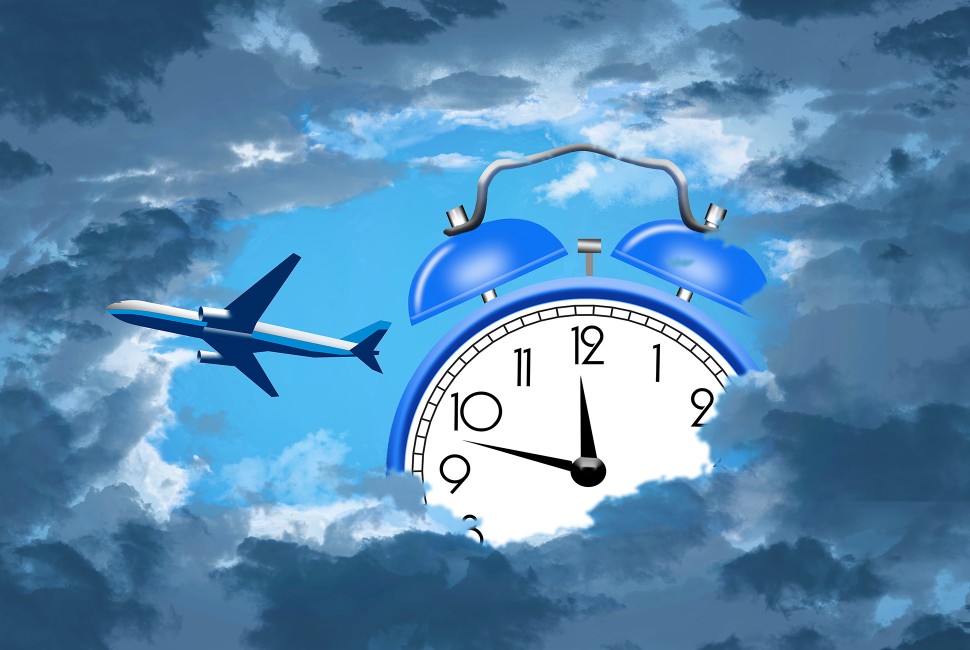Northwestern University researchers have developed a mathematical model to better understand how the distinct internal clocks that effect how we sleep and eat work in tandem and used it to demonstrate that travelers could ease jetlag by eating a large breakfast in the time zone of their destination.
The brain is home to the body’s central clock, outside of which exist peripheral clocks that keep almost every system in the body on a schedule. These circadian rhythms respond to stimuli including light, food and physical activity, which can also disrupt the rhythms.
“Conflicting signals, such as warm weather during a short photoperiod or nighttime eating when your brain is about to rest — can confuse internal clocks and cause circadian desynchrony,” said Yitong Huang, a postdoctoral fellow in the Weinberg College of Arts and Sciences, who led the study.
Jetlag occurs when our internal clock does not align with day and night as determined by our position on Earth relative to the sun. The circadian clocks of older adults are more prone to misalignment, and for that reason, older adults suffer from more severe jetlag.
A relationship between jetlag, light, and mealtimes has been observed experimentally. But little is known about how the body’s various internal clocks affect each other or what drives increased misalignment of circadian rhythms with age. The theoretical model and resulting study published recently in Chaos: An Interdisciplinary Journal of Nonlinear Science is novel in that it could help scientists better understand this complex interplay.
“Most studies primarily focus on one particular time cue or a single clock,” Huang said. “Important gaps remain in our understanding of the synchronization of multiple clocks under conflicting time cues. As a loss of synchrony between clocks is thought to be a hallmark of aging, this question becomes even more pressing in an era where the population is aging.”
The model designed by Huang and a team of scientists at Northwestern and the Santa Fe Institute features two groups of coupled oscillators that mimic the natural rhythms of circadian cycles. Each oscillator influences the others while simultaneously adjusting based on unique external cues.
Using this model, the team was able to explore how such a coupled system could be disrupted, what makes the effect worse and what actions result in more resilience of the circadian rhythm.
They found that common symptoms of aging, such as weaker signals between circadian clocks and a lower sensitivity to light, result in a system that is more vulnerable to disruptions and slower to recover. They also demonstrated a potential method to speed up recovery from jet lag and similar disruptions.
“Having a larger meal in the early morning of the new time zone can help overcome jet lag,” said Rosemary Braun, a co-author of the study and an associate professor of molecular biosciences, applied mathematics and physics at Northwestern. “Constantly shifting meal schedules or having a meal at night is discouraged, as it can lead to misalignment between internal clocks.”
The findings highlight the importance of peripheral clocks in regulating the circadian rhythm and provide fresh insights into the complex interplay between aging and the resilience of the circadian system, the researchers said. They emphasized that the study results are from computer simulations of the mathematical model, which enable them to generate hypothesis to be tested in future experiments.
The authors plan to investigate the other side of the equation and identify the factors that result in more resilient internal clocks. Such discoveries could result in recommendations to prevent jet lag in the first place, or to keep the circadian system healthy into old age.


